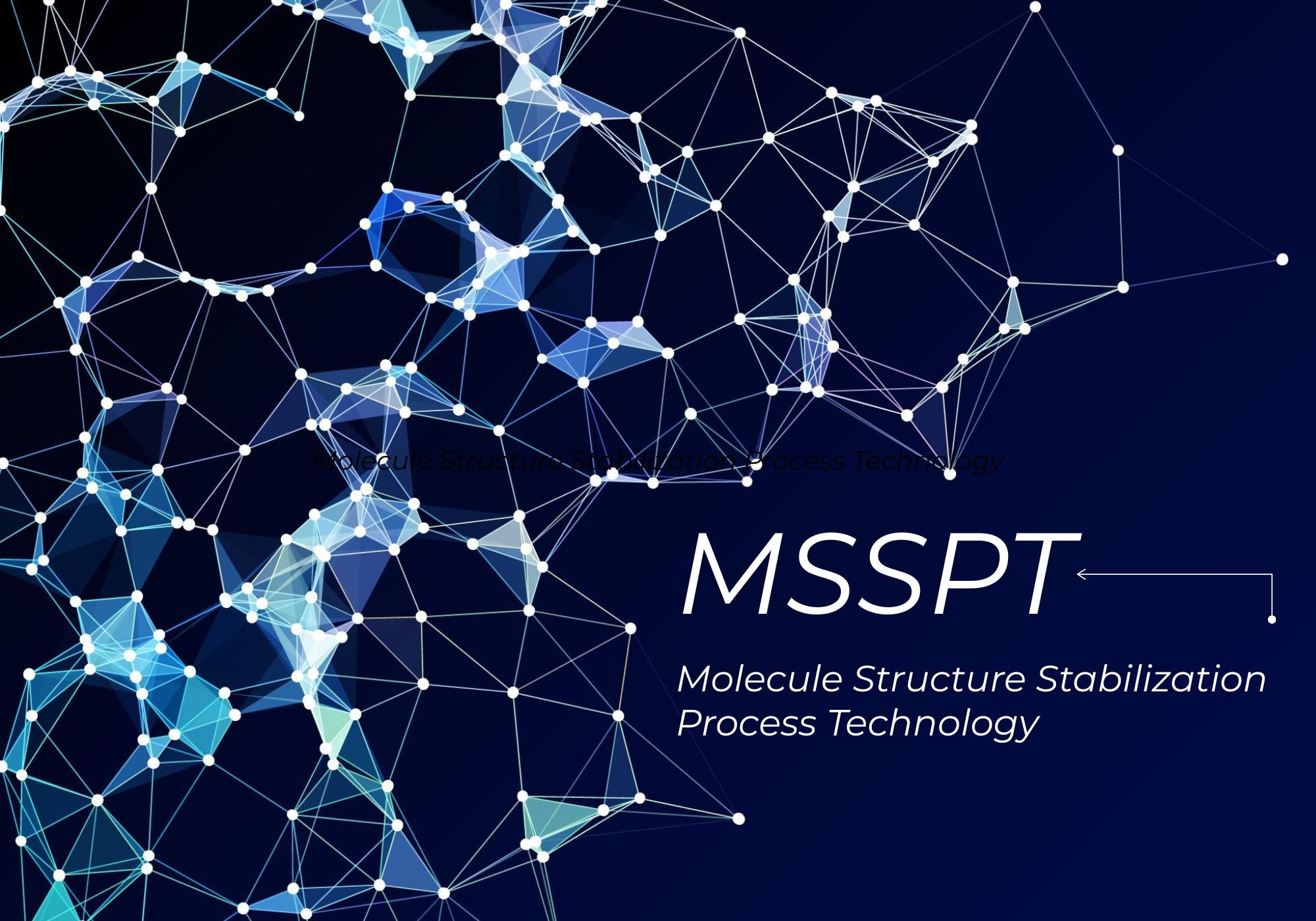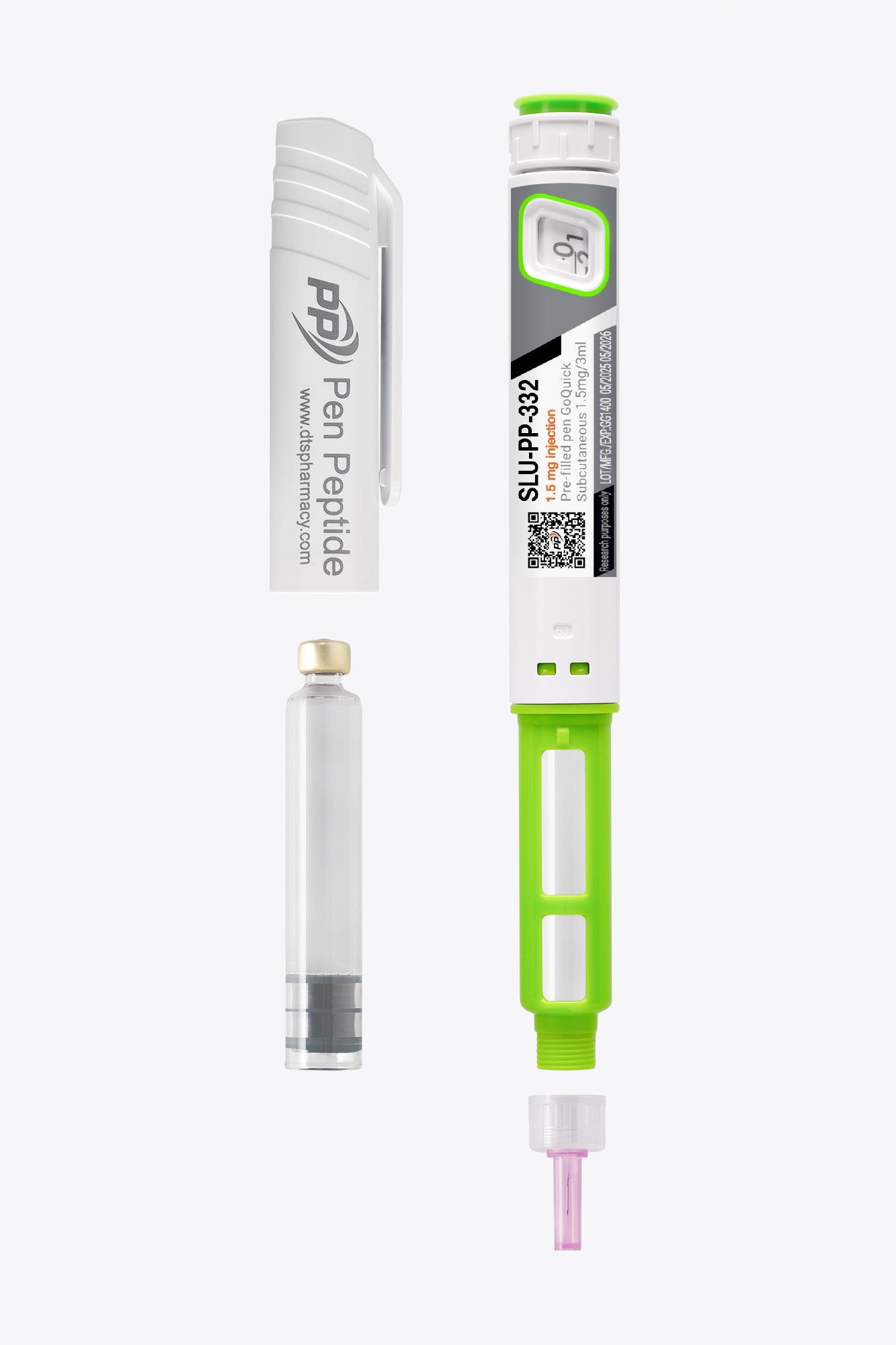Pen Peptide
SLU-PP-332 | 1.5mg
SLU-PP-332 | 1.5mg
Pre-Mixed Stabilized Pen
Couldn't load pickup availability
- 🥇 The first peptide brand with Pre-Mixed Pen stabilized formulations
- 📦 We ship with DHL Express in thermo-insulated packaging
- 💳 Secure payment by bank transfer
- 🧪 Purity ≥98% for precise research protocols
✅ Proper storage
✅ Proper storage
To ensure the optimal quality of our products, we pay special attention to the delivery and storage of peptides. All our shipments are sent in special cooling boxes that maintain the required temperature during transportation. This guarantees that the products will reach you in perfect condition.
After receiving the peptides, it is important to store them properly to preserve their stability and effectiveness. We recommend storing them at a temperature between 2°C and 8°C in a refrigerator. This ensures that the peptides retain their properties throughout their shelf life.
✅ Order and Delivery
✅ Order and Delivery
At Pen Peptide, we ensure fast and secure delivery of your order with DHL Express, maintaining the highest quality and reliability throughout the process.
How we process your order:
Once your payment is confirmed via bank transfer or debit/credit card, we dispatch your order on the next business day.
Orders are carefully packaged in temperature-controlled cooling boxes to ensure product integrity during transportation.
Delivery timeframe:
Standard delivery time within the Europe & UK: 1 to 3 business days (typically 1-2 business days for most locations).
Deliveries are handled exclusively by DHL Express, providing a fast and reliable shipping experience.
Tracking & order confirmation:
After your payment has been successfully processed, you will receive an email confirmation with your tracking number.
You can use the provided tracking link to monitor your shipment’s progress and estimated delivery time.
With Pen Peptide, you can trust that your order will arrive quickly and in perfect condition, ensuring a seamless and efficient experience.
✅ Why choose Pen Peptide?
✅ Why choose Pen Peptide?
If you are looking for peptides of the highest quality with over 98% purity, Pen Peptide is one of the best places where you can easily and securely order online. At Pen Peptide, we specialize in the synthesis of highly purified peptides intended exclusively for Research & Development Use Only.
Our peptides are produced in certified GMP laboratories, adhering to strict standards of quality, safety, and control. Each product undergoes rigorous testing for purity and stability to ensure you receive research materials with verified origin and maximum effectiveness.
We understand how important fast and reliable service is for our customers. That’s why we offer express delivery within 1 to 3 business days. All shipments are securely packaged to maintain product quality during transportation.
✅ Molecular Structure Stabilization Process Technology (MSSPT)
✅ Molecular Structure Stabilization Process Technology (MSSPT)
The Molecular Structure Stabilization Process Technology (MSSPT) focuses on preserving the structural integrity and functionality of molecules under harsh conditions and during prolonged storage periods. This process may involve modification of the molecule itself, optimization of storage conditions, or the use of auxiliary components that protect the molecules from degradation.

Key stages of the process:
1. Molecular modification:
Chemical and genetic engineering: Involves altering the structure or composition of the molecule to make it more resistant to degradation. For example, protein cross-linking can prevent unfolding, or modification can reduce susceptibility to chemical reactions.
Chemical modification: The introduction of protective groups or changes to reactive sites can prevent unwanted chemical reactions and degradation.
2. Optimization of storage conditions:
Lyophilization (freeze-drying): This method removes water from the sample, helping to preserve structure and prevent degradation during storage.
Storage in specialized containers: Using containers that protect from light and oxygen can safeguard molecules from photodegradation or oxidation.
Controlled-release systems: These systems provide a steady concentration of the therapeutic molecule, but introduce additional challenges related to stabilizing molecules over extended release periods.
3. Use of auxiliary components:
Buffers: Buffers help maintain stable pH levels, which are crucial for many chemical reactions and biological processes.
Antioxidants: These additives can prevent or reduce oxidative degradation, which is a common cause of molecular instability.
Stabilizing agents: These help prevent aggregation, precipitation, or other forms of degradation.
4. Understanding molecular interactions:
Thermodynamic equilibrium: A fundamental understanding of the interactions between a molecule and its environment is essential for developing effective stabilization strategies.
Detergents for membrane proteins: Specialized detergents, such as those developed to stabilize membrane proteins, help maintain their structure in solution.
Molecular simulations: Techniques such as molecular dynamics can provide valuable insights into the stability and behavior of molecules.
5. Examples of stabilization techniques:
Protein stabilization: Strategies include forming disulfide bonds, using stabilizing agents or chaperones, and introducing stabilizing mutations.
Polymer stabilization: Methods include the addition of antioxidants or the use of modified clay minerals that prevent polymer degradation.
Propellant stabilization: Stabilizers are essential to prevent the decomposition of propellants and ensure their safe and reliable performance.
Pen Peptide – Proven Molecular Stabilization
Our peptide pens are developed with a strong focus on preserving the biological activity and structural stability of the active compounds. Thanks to thoroughly researched stabilization processes—including optimization of storage environments and precise modification of molecular structure—we achieve long-term durability and reliability of the peptides under appropriate storage conditions.
The MSSPT (Molecule Structure Stabilization Process Technology) we use incorporates various approaches to maintain molecular integrity, including the use of suitable buffers, antioxidants, and stabilizing agents. The MSSPT technology allows for the integration of multiple active molecules into a compact volume without compromising their structural integrity or biological effectiveness. Additional optimization of storage conditions—such as pH control and prevention of photodegradation and oxidation—ensures maximum stability and bioactivity of the peptides.
These precise measures guarantee that the final product remains effective and stable even after extended storage periods, making it a secure and reliable option for use in various research protocols.
What is SLU-PP-332?
SLU-PP-332 is an experimental peptide researched for its potential to influence metabolic and energy processes at the cellular level. It is a small, next-generation bioactive molecule classified among PAMs (Positive Allosteric Modulators). Primary studies focus on its interaction with natural mechanisms of cellular regulation, physical endurance, and oxidative metabolism.
Under experimental conditions, the peptide is used to study adaptive responses to stress, as well as its effect on mitochondrial efficiency, energy utilization, and recovery processes during intense physical exertion.
What are the benefits of SLU-PP-332?
Scientific interest in SLU-PP-332 stems from its potential to:
- Enhance energy metabolism, particularly in skeletal muscle
- Increase physical endurance and resilience during exertion
- Modulate glucose metabolism and fatty acid oxidation
- Support adaptive cellular responses under metabolic stress
- Sustain mitochondrial activity without negatively affecting heart rate
Observations from preclinical studies suggest that SLU-PP-332 may activate mechanisms related to accelerated energy use and recovery, without causing overstimulation or neurotoxic effects.
Clinical trials and findings related to SLU-PP-332:
Currently, SLU-PP-332 remains in the preclinical stage of research. Data from experimental models indicate that regular administration in controlled doses may positively influence:
- Increased aerobic capacity and VO₂ max
- Improved mitochondrial activity in muscle tissue
- Enhanced tolerance to intense physical effort
- Activation of metabolic pathways similar to those observed with training
The results are promising but require further confirmation in clinical settings.
Proper administration and dosage of SLU-PP-332:
Proper administration and dosage of SLU-PP-332 depend on individual needs and goals. Typically, it is administered in doses of 7 to 10 units twice per day: 7 to 10 units in the morning and 7 to 10 units in the afternoon. A dose of 7 units is recommended for users under 55 kg.
Additional usage instructions: The pen’s dial is adjusted by turning it to 7 or 10 (1 unit equals 1 notch on the dial), and the product is injected into the abdominal area or the front of the thigh. After the injection, it is advised to wait 10 seconds before withdrawing the needle. Injection site rotation is recommended.
The peptide cycle lasts up to 1 month, followed by a 15-day break.
One pen contains 300 units of 5 micrograms each.
Example conversion of SLU-PP-332 pen (1.5mg) units to micrograms:
1 unit = 5 µg; 5 units = 25 µg; 10 units = 50 µg
Possible side effects of SLU-PP-332:
To date, no serious side effects have been reported when using SLU-PP-332 under preclinical conditions. Possible reactions observed in research models may include:
- Temporary fatigue or headache at higher doses
- Mild local sensitivity at the injection site
- Changes in appetite or energy levels
As with all peptides, side effects depend on dose, body weight, duration of use, and individual sensitivity. Combining with other stimulants is not recommended without clear scientific justification.
Share
For laboratory purposes and personal observation only.
For laboratory purposes and personal observation only.
The information has been collected from numerous studies and analyses conducted over the years and is not intended for diagnosing, treating, or preventing any diseases.


